
The food that was processed in a dehydrator can also be stored for a long time. These devices are not the cheapest, but the benefits they offer exceed their prices. You should always put your health in front everything else.
Even though using these devices is pretty simple and straightforward, you should know that there are some things you have to stick by. Otherwise, you may end up with unwanted results, and your unit can stop working as it should.
Here are the basic rules of food dehydration.
If you’d like a ultimate list of foods that you might not want to or foods you shouldn’t dehydrate check out our Foods You Should Avoid to Dehydrate post.
Don’t Mix Herbs And Fruits In The Drying Process
Cut The Veggies And Fruits Into Similar Sizes
If you put apples and bananas into the unit at the same time, you should also monitor the progress because they don’t dry the same. Keep an eye on the progress and take the fruit that’s dried first out in time.
Dry Similar Foods Together
For example, if you dry hot peppers and tomatoes, the tomatoes will end up tasting spicy. The same goes for garlic, onions, and other similar veggies. Ingredients with a strong aroma must be dried separately.
Blanche The Foods Before Dehydrating To Get The Best Results
Blanching the food before putting it in a dehydrator is a very good idea, but it’s not mandatory. If you decide on taking this step, know that the blanching process destroys the enzymes in the food, making it last longer when stored. The shelf life of veggies and fruits is drastically improved by blanching.
The food also tastes fresher in case you want to rehydrate it later on. Blanching is done by boiling the ingredients for a couple of minutes and putting them in cold water after that.
Don’t Overlap Vegetables And Fruits
Placing the pieces correctly on the drying trays is critical. Make sure you don’t overlap fruits and veggies because it could interfere with the drying process, especially if your dehydrator dries the food vertically. The heat from the base won’t be able to make its way up at the same rate, which will dry your food unevenly.
The dehydrating process will take more time this way. That means that they will use more power and increase your electricity bill. Make sure you place the trays with even spaces between them, and everything should work out just fine.
Don’t Use The Device In Rooms With No Air Circulation
Don’t Add Any Sugar
When you want to dehydrate fruit leather, don’t use sugar granules, honey or corn syrup works much better. The syrup will be absorbed by the ingredients, while the sugar only crystallizes on the outside of the fruit. The taste is there, but the cleaning process will be much harder if you use sugar.
Don’t Sprinkle Lemon Juice Over All The Vegetables
If The Food Is Marinated In Alcohol, Don’t Dehydrate It
Never Store Dehydrated Foods In The Open
Store everything in sealed plastic or glass jars. Also, make sure you check on the stored food once in a while, to make sure it is still safe for consumption.
Don’t Touch Any Hot Parts of Your Dehydrator With Bare Hands
Get a couple of mitts before you remove a tray from your dehydrator because they can be very hot and you can hurt yourself.
Conclusion
Having a dehydrator around the house is great because you can always make sure you’re stocked up with healthy foods. These simple tricks will help you get the best results and the tastiest dehydrated ingredients you can later use in your cooking. You’ll keep the flavor, but you will also get a much longer life with one of these devices.

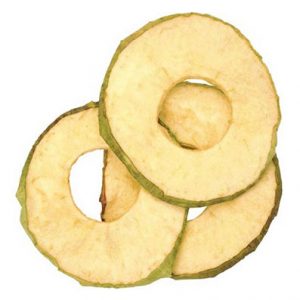


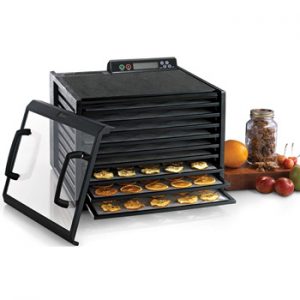

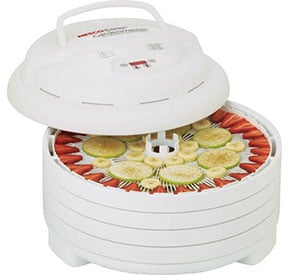



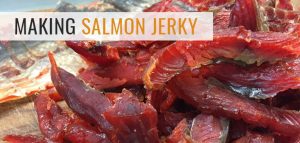



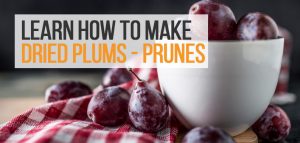
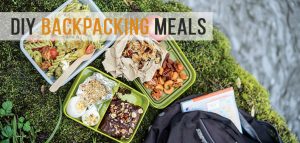

I just purchased a 9 year old model 10 tray STX Deh-400 600 watt dehydrator but the front where you slide the trays in and out is open. There is no door. Was that common in older models, and is it ok to use it that way.
There should be a cover on the front side like it’s shown here: https://images-na.ssl-images-amazon.com/images/I/41J9CNSyapL.jpg
Is that the model you have?
No all dehydrators have doors yours is missing
I’m only drying one sheet of fruit leather do I need all the trays in or just the one?
I don’t think you would need all the trays if you’re not using them.
no you do not I have a 10 tray professional. But I just remove a tray, load it then shut the door, all my trays start in place. My unit is stainless steel with wire trays
I like your definitive procedure. Have you ever used maple syrup with Italian plums? I have a lot on hand and a lot of plums.
Can I use the dehydrator outside when the weather is dry ? I’m in New Orleans LA. Thanks
I see no reason not to. Just keep it dry and you should be fine 🙂
Where can I get a heating element for my dorrex dehydrator?
how hot my kitchen will be with all night on? Living in verg hot area.
can I make crackers on parchment paper and dry homemade paper in my excaliber dehydrator at the same time?